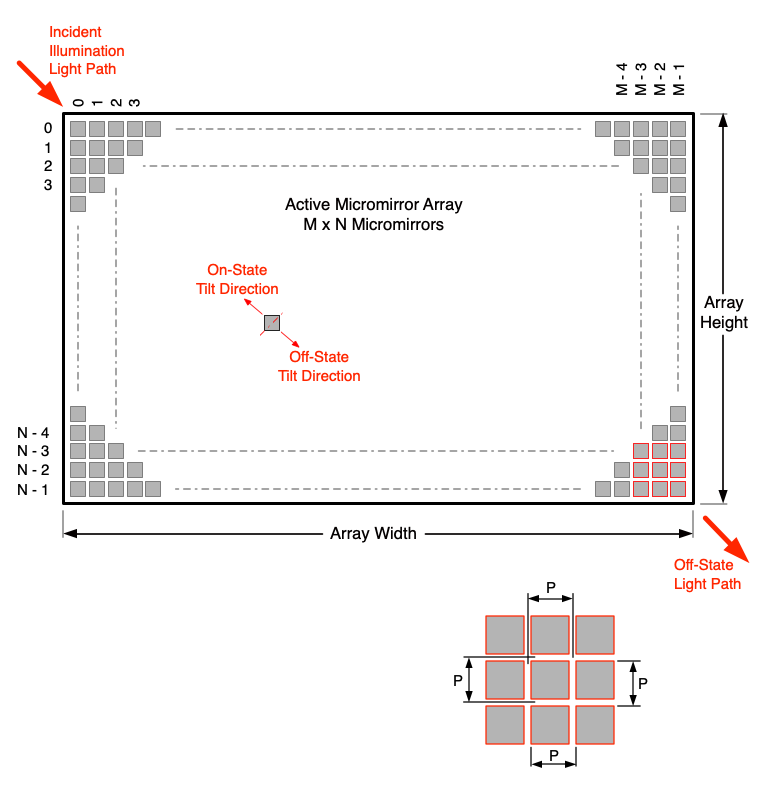DLPS273A May 2024 – December 2024 DLP472TE
PRODUCTION DATA
- 1
- 1 Features
- 2 Applications
- 3 Description
- 4 Pin Configuration and Functions
-
5 Specifications
- 5.1 Absolute Maximum Ratings
- 5.2 Storage Conditions
- 5.3 ESD Ratings
- 5.4 Recommended Operating Conditions
- 11
- 12
- 5.5 Thermal Information
- 5.6 Electrical Characteristics
- 5.7 Switching Characteristics
- 5.8 Timing Requirements
- 5.9 System Mounting Interface Loads
- 5.10 Micromirror Array Physical Characteristics
- 5.11 Micromirror Array Optical Characteristics
- 5.12 Window Characteristics
- 5.13 Chipset Component Usage Specification
-
6 Detailed Description
- 6.1 Overview
- 6.2 Functional Block Diagram
- 6.3 Feature Description
- 6.4 Device Functional Modes
- 6.5 Optical Interface and System Image Quality Considerations
- 6.6 Micromirror Array Temperature Calculation
- 6.7 Micromirror Power Density Calculation
- 6.8 Window Aperture Illumination Overfill Calculation
- 6.9 Micromirror Landed-On/Landed-Off Duty Cycle
- 7 Application and Implementation
- 8 Power Supply Recommendations
- 9 Layout
- 10Device and Documentation Support
- 11Revision History
- 12Mechanical, Packaging, and Orderable Information
5.10 Micromirror Array Physical Characteristics
| PARAMETER DESCRIPTION | VALUE | UNIT | |
|---|---|---|---|
| Number of active columns(1)(2) | M | 1920 | micromirrors |
| Number of active rows(1)(2) | N | 1080 | micromirrors |
| Micromirror (pixel) pitch (1) | P | 5.4 | μm |
| Micromirror active array width(1) | Micromirror pitch × number of active columns | 10.368 | mm |
| Micromirror active array height(1) | Micromirror pitch × number of active rows | 5.832 | mm |
| Micromirror active border(3) | Pond of micromirror (POM) | 20 | micromirrors/side |
(1) See Figure 5-15.
(2) The fast switching speed of the DMD micromirrors combined with advanced DLP image processing algorithms enables each micromirror to display four distinct pixels on the screen during every frame, resulting in a full 3840 × 2160 pixel image being displayed.
(3) The structure and qualities of the border around the active array include a band of partially functional micromirrors referred to as the Pond Of Micromirrors (POM). These micromirrors are structurally and/or electrically prevented from tilting toward the bright or ON state but still require an electrical bias to tilt toward the OFF state.
 Figure 5-15 Micromirror Array Physical Characteristics
Figure 5-15 Micromirror Array Physical Characteristics